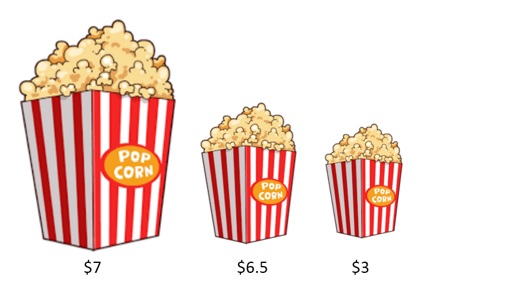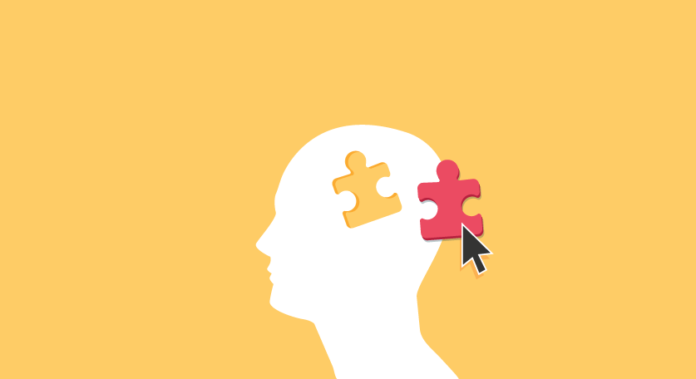In an era driven by consumers, consumer behavior studies are increasingly getting relevant than ever before. Brands are constantly competing to transform consumer experience. In order to gain some control on consumer perceptions, you might have already invested in consumer studies and research. There is no replacement for insights gained from such studies. However, there are certain psychology hacks which are privy to people involved in business strategy and marketing campaigns. In the following article, we will briefly explore these biases, decision errors, paradoxes and more.
Survivorship Bias
More people are getting affected by Entrepreneurship Porn than ever and one can’t just blame journalists for this situation. Facebook, which has become a natural source of news for people, provides the kind of feed a person is most likely to approve, like & share. This eventually puts people into an endless cycle of reading, viewing and listening to stories that have a happy ending. Though, there is no harm in taking inspiration from successful entrepreneurs, sports persons, actors, writers, leaders, and musicians – these stories are only a small fraction of all the stories that were ever written. More people fail than succeed in any given field. Still, humans generally overestimate their chances of success and the society usually promotes this behavior. This is called Survivorship bias, which perhaps is the mother of all biases. For marketers, it is pretty straightforward to leverage this bias – it’s the oldest trick in the book. Share a successful case study, give it a personal touch to connect with your audience and voila – you’re a successful marketer! Yes, that’s yet another example of Survivorship Bias at work.
Scarcity Error
Hurry Up – Offer Valid Till Stocks Last!
Christmas Special Deal
“Flash Sale” – Register Now!
These are time-tested examples demonstrating the impact of scarcity. The fear of missing out forces consumers to buy with all haste. However, in the age of the internet, you might have to mask your tactics for using this decision error effectively. Flash Sales on e-commerce websites are the latest successful implementation and perhaps you can replicate the same
Loss Aversion
As a marketer, you’ve probably used Loss Aversion in your ad-copy. Instead of telling the benefits, you must have tried telling your customers about what they are losing by not using your product/service. The fear of losing ‘something’ is a better driver than the prospect of gaining something of similar value. This also explains why a newbie in a stock market keeps on holding to a stock for a much longer period than what experienced traders would advise. This type of thinking is slightly related with the Sunk Cost Fallacy, which every marketer should be cautious about. For example, consider your sales team investing a lot of time in persuading a prospect. You have also given your prospective client a better deal and a free trial period. But none of this has led to any business. If you decide to continue persuasion just because you have invested so much time and money in the process, it will make you a victim of the Sunk Cost Fallacy. Do not continue projects just because you’ve invested too much into them; decide future investments only on the basis of their projected future pay-off.
Ikea Effect
Now that we have discussed time investment, there’s something you could probably use for engaging customers. Anyone who has assembled an Ikea furniture would know that their installation manuals aren’t best of the breed. You must be a genius to understand those manuals and then do correct assembly in the first attempt. Moreover, whoever assembles the Ikea furniture starts taking a great pride in his/her masterwork. This is called the IKEA effect. Consumers value products highly if they get a chance to get involved in its creation. Allowing customers to make small customizations can also work. There are numerous ecommerce websites which allow designing, customizations and also allow people to boast about their creations in social channels. If you can make your product customizable, you can bank on this phenomena.
Decoy Effect
Every one of us has come across Decoy effect in one way or the other. It is seen that more than often a consumer will change a preference between two options when also presented with a third option (usually an absurd one). Here’s an example:

People would be equally divided when asked to choose between small ($3) and large ($7) popcorn. However, buyers would be likely to go for $7 large popcorn when presented with a third option – $6.5 decoy. The Decoy Effect works because one of the options appears considerably more desirable than the decoy. This affects even the best of rational minds, making them buy more than what they need.
The Availability Heuristic
Do you know which animal/insect/reptile is responsible for a maximum number of human deaths? The answer is Mosquito (7,25,000 deaths/year) followed by Snake (50,000), Dog (25,000), Snail (10,000) and Roundworm (5000). Still, people are generally more scared of a Shark bite or a Bear attack than a statistically more lethal mosquito bite. This is because they are affected more by the sensational news reports than boring facts. Hence, whenever people are asked to take a quick decision, the information at the top of their minds cloud their decision. Further, people would also rate the probability of certain events higher than they would be on paper.
For marketers, it is important to know that information most readily and impressively available affects their consumers’ decision. Hence, a story is almost always likely to be more helpful than a stats sheet. That’s why client testimonials and videos are essential for your website homepage.
Social Proof
People are more likely to queue up for a crowded counter in a trade show than an empty one. Same is true for a restaurant. People like and share online posts more readily if others have also done it in the past. These are all examples of Social Proof. As a marketer, if you can effectively demonstrate the social likeability or acceptance for your product/service, it will influence your consumers more. Again, humans are not naturally tuned to understand numbers; hence, use powerful stories to engage your customers.
Confirmation Bias
You must be aware of the health benefits of an Apple. People generally like Apple. However, there must be a kid somewhere in the world who would hate Apples – so he would google – “Apples are bad for health” and he would find something to support his revulsion for the fruit. This is an example of Confirmation Bias at work. Ever worked under a boss who made statements and asked you to validate those with some data? People who make corporate presentations and marketing plans do it all the time. You can find all kinds of contradictory information on the internet to support your personal theories, beliefs, and convictions. Moreover, humans have a tendency to discount any new information that contradicts their beliefs or views. This bias towards favorable information sets is known as Confirmation Bias. Consumers are likely to collect data which supports their choice of brand and ignore information which contradicts it. Also, marketers need to understand why consumers like their brand.
Paradox of Choice
‘The Paradox of Choice – Why More Is Less’ is a 2004 book by American psychologist, Barry Schwartz. In his book, Barry explains how an abundance of choice has made buying difficult for consumers. He asserts that fewer options are often better for consumers. That is what differentiates iOS and Android – Apple loyalists don’t have too much to worry about – all they have to do is get a new iPhone. On the other hand, Android loyalists have to decide between an endless number of models and brands. Marketers can perhaps take some inspiration from this approach and avoid offering too many subscription plans or offers to their customers.
Winner’s Curse
Digital marketers know that bidding based PPC campaigns include a lot of guesswork. There’s isn’t any scientific formula for marketers to decide how far they should go in the bidding. The auction-based pricing is present everywhere – from eBay to Groupon to Google AdWords. If you’ve ever placed a blog writing assignment on any of the freelancing portals, you must’ve witnessed Winner’s Curse with writers claiming the job for pennies. Auction-based pricing can help you avoid under-pricing or overpricing your products leaving the job to the market.
Author Bio
Varun Shakya, is an avid blogger and technology enthusiast. He has been handling content and communications as a part of sales enablement & marketing team at Credencys Solution Inc

